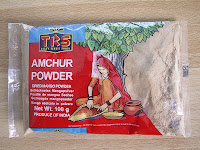Barbecue Food Safety - BY CHEF RAMAN
Cases of food poisoning double within the summer months, so be sure you know the simple steps that will help to keep food safe.
Food poisoning is usually mild, and many individuals improve within a week. However sometimes it can be worse, actually deadly, so it's vital that you take the risks seriously. Children, older people and people with weakened immune systems tend to be especially susceptible to food poisoning.
"The safest choice would be to cook food indoors using your stove," says a spokesperson from the Food Standards Agency (Fsay). "You can then put the cooked food outdoors on the barbecue for flavour." This is often an easier choice if you're cooking food for a number of people at the same time.
But if you'd rather cook on the barbecue, the two main risk factors tend to be:
undercooked meat
spreading bacteria from uncooked meat onto food that's ready to consume
This is because raw or even undercooked meat may contain bacteria that cause food poisoning, such as salmonella, E.coli and campylobacter. Nevertheless, it's easy to kill these bacteria by cooking meat till it is piping hot throughout.
Cooking meat on the barbecue
When you are cooking any kind of meat on the barbecue, such as chicken (chicken or even turkey), pork, steak, hamburgers or sausages, make certain:
The hot coals are glowing red with a powdery gray surface before you begin cooking, as this means that they're hot enough.
Frozen meat is properly thawed out before you decide to cook it.
You turn the meat regularly and move it around the barbecue to cook it evenly.
Keep in mind that meat is actually safe to eat only if:
It is piping hot in the centre.
There isn't any pink meat visible.
Any juices are clear.
"Don't presume that simply because meat is charred on the exterior it will be cooked correctly on the inside," states the Fsa spokesperson. "Cut the meat at the thickest part and ensure none of it is pink inside."
Some meat, such as steaks and joints of beef or lamb, can be served rare (not cooked in the middle) so long as the exterior has been properly cooked. This will kill any kind of germs that could be on the outside of the meat. However, food produced from minced meat, for instance sausages and hamburgers, should be cooked completely all the way through.
Raw meat
Bacteria from raw meat can move very easily on to your hands, and then on to anything else you touch, including food that's prepared and ready to consume. This is called cross-contamination.
Cross-contamination can happen if uncooked meat touches anything (including plates, utensils, tongs and chopping boards) which then comes into contact with other food.
Some easy steps to help avoid cross-contamination are:
Wash both hands after every time you touch raw meat.
Use separate utensils (plates, tongs, storage containers) for cooked and raw meat.
Never put cooked food on a plate or surface that has had raw meat on it.
Keep uncooked meat in a sealed pot away from foods which will be ready to consume, such as salads and buns.
Don't put uncooked meat alongside cooked or partly-cooked meat on the bbq.
Don't put sauce or marinade on cooked food if it has already been used with raw meat.
Keeping food cool
It is also vital that you keep some foods cool to prevent food-poisoning germs spreading.
Be sure you keep the subsequent foods cool:
salads
dips
milk, cream, yogurt
desserts as well as cream desserts
sandwiches
ham and other cooked meats
cooked rice, including rice salads
Don't leave meals out of the refrigerator for more than a couple of hours, and don't leave food in the sun.

















